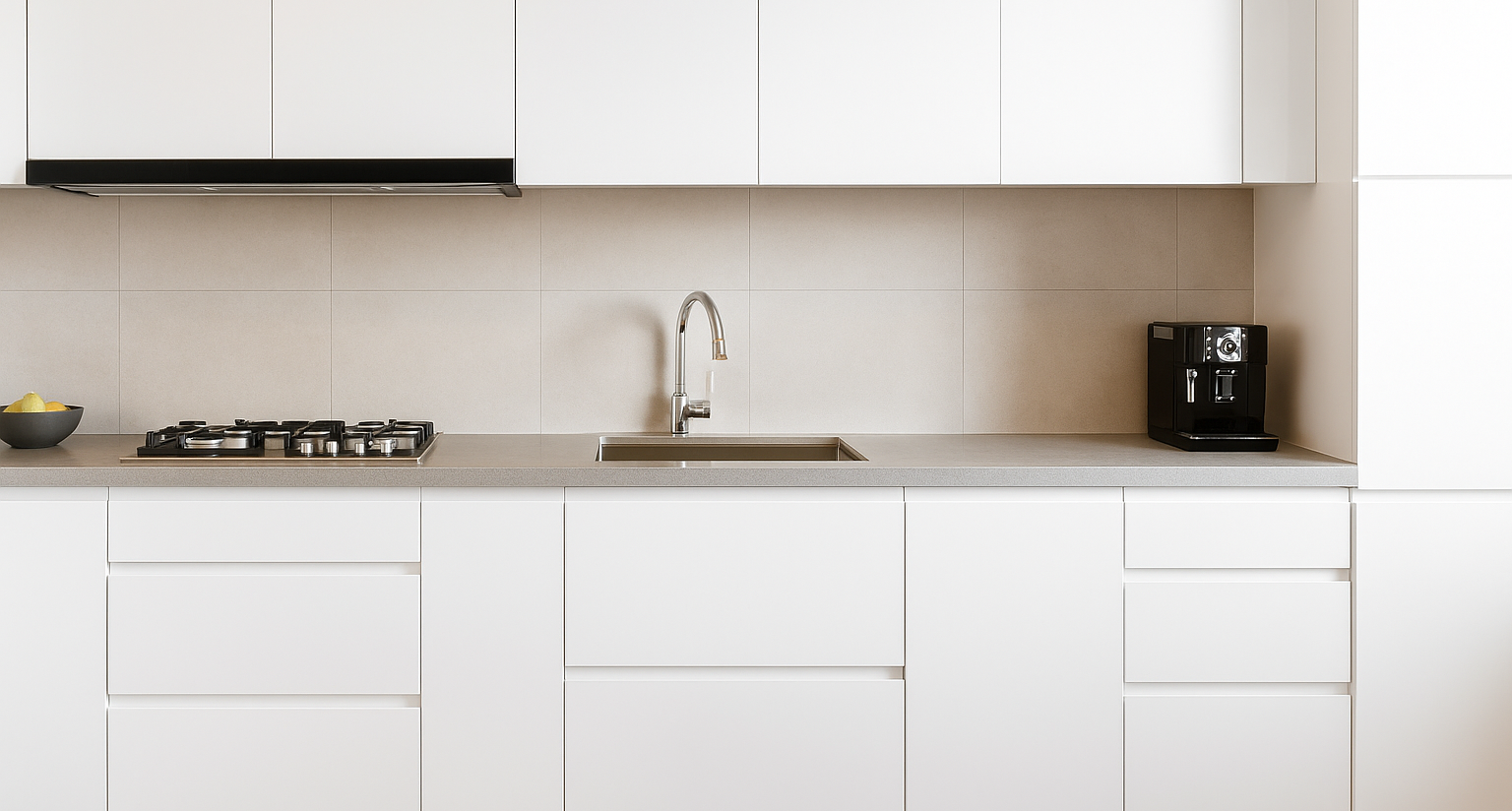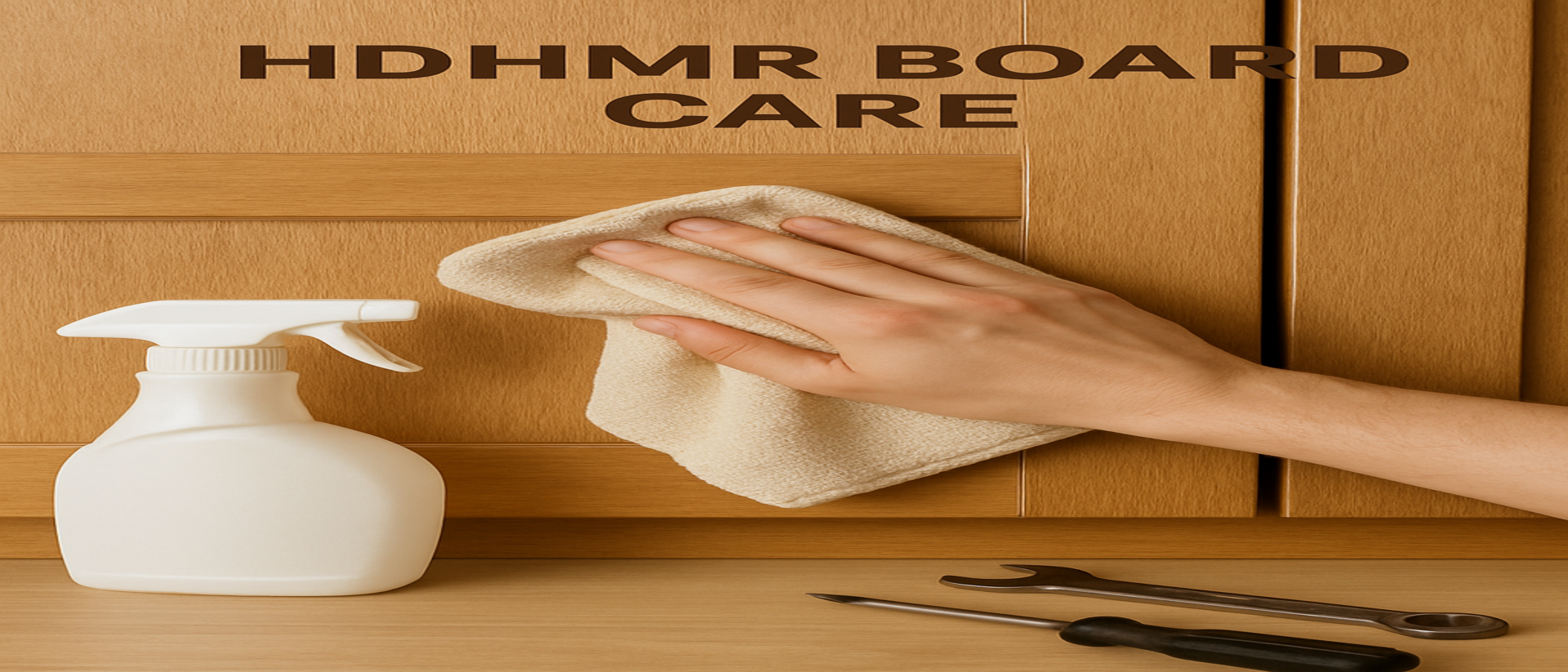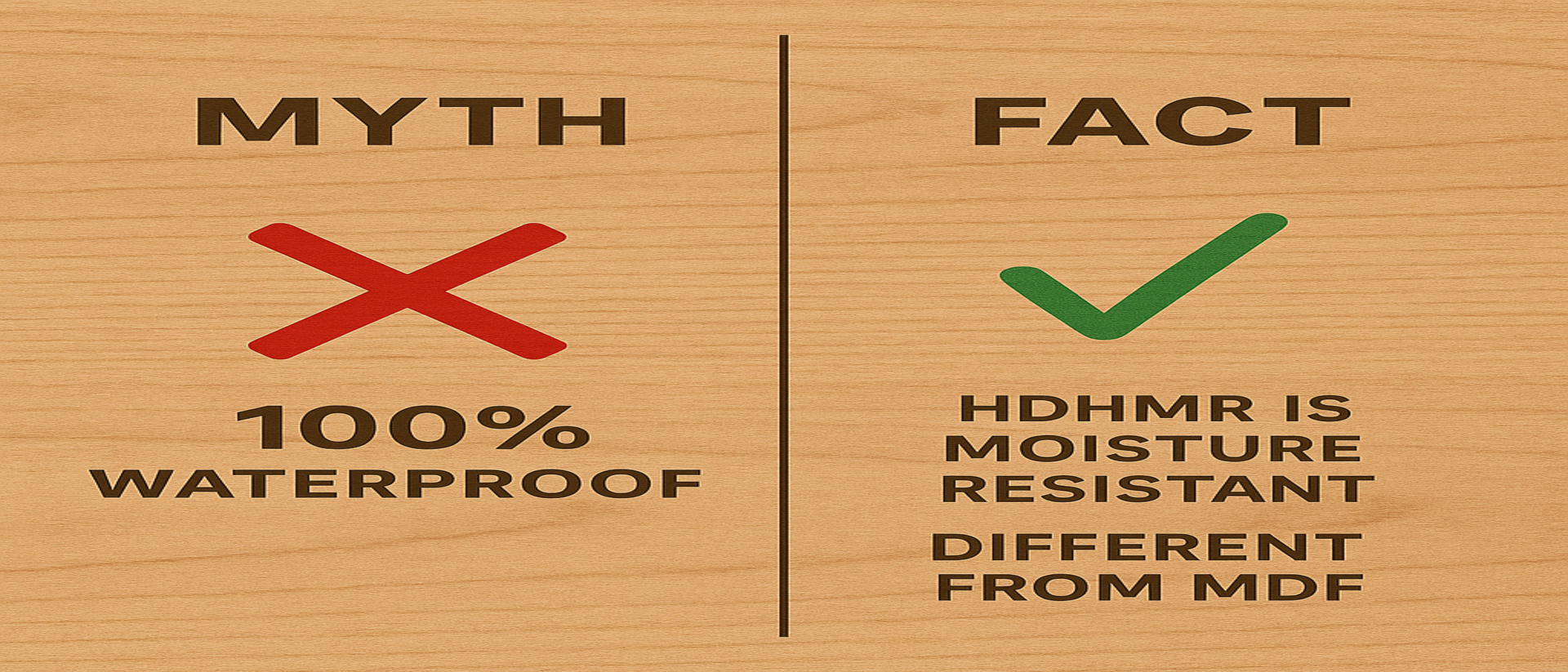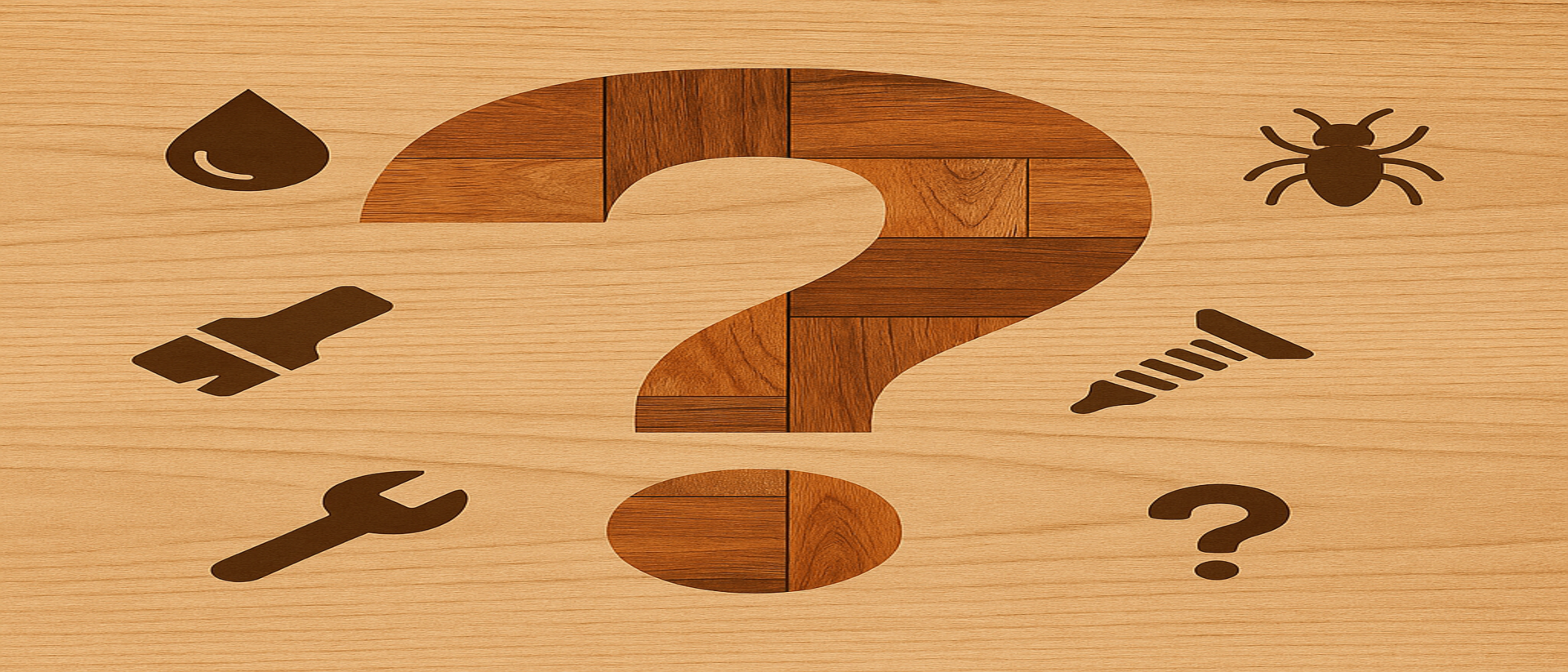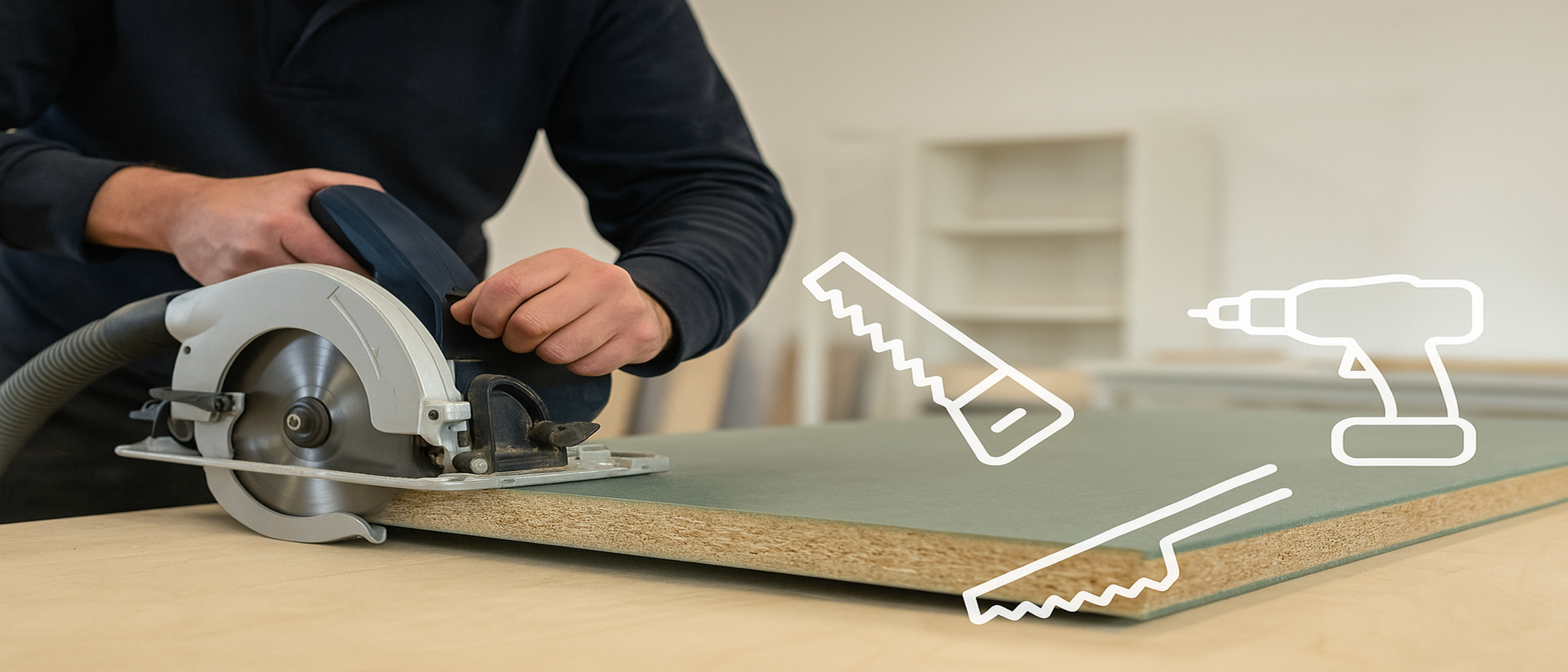Thanks to its impressive properties, HDHMR board has become a go-to material for a variety of interior applications. If you’re wondering where you can (or should) use HDHMR in your home or projects, this article will highlight the most common and beneficial uses of HDHMR boards. We’ll look at how HDHMR performs in kitchens, for doors, in modular furniture like wardrobes and cabinets, and even some less obvious applications. By the end, you’ll see why HDHMR is often the material of choice for these uses, especially compared to traditional plywood or MDF.
HDHMR in Modular Kitchens
Kitchen cabinets and shutters are arguably the #1 application for HDHMR boards. Kitchens are humid, busy, and often the first place where inferior wood materials show problems. HDHMR’s moisture resistance and strength shine in this environment.
- Cabinet Carcasses (Boxes): The carcass or box of modular kitchen cabinets can be made from HDHMR for durability. Since kitchens often have to deal with occasional spills, steam from cooking, and even cleaning with a damp cloth, having a board that doesn’t warp or swell is a huge advantage. HDHMR cabinets can handle the high humidity of kitchens and even the heat to some extent (like near ovens or stovetops), far better than standard particle board or low-grade ply. As a result, your kitchen cabinets maintain their shape and door alignment over time.
- Cabinet Shutters (Doors): The visible part of your kitchen – the cabinet doors – can also be made of HDHMR. Here you benefit from HDHMR’s smooth surface and machinability. Whether you want a plain laminated finish or routed designs on the shutters, HDHMR works great. It provides a smooth canvas for laminates or paints, so you can achieve the exact aesthetic you want (be it glossy acrylic finish, matte laminate, or painted shaker-style doors). Additionally, since cabinet doors are opened and closed countless times, the fact that HDHMR holds screws well means your hinges stay firmly attached. No sagging doors because the screw got loose in the board!
- Drawers and Shelves: Inside the kitchen, drawers made of HDHMR slide smoothly and won’t sag under weight (think of heavy cutlery or utensil drawers). Shelves for crockery or pantry items can carry heavy loads without bending. Importantly, if there’s a spill (like something leaking in a pantry shelf), an HDHMR shelf won’t be ruined – just wipe it off. Many modern kitchen designs utilize HDHMR for base cabinets and shelves for this reason.
- Countertops Substrate: While the top surface of a countertop might be granite, quartz or laminate, the underlying substrate can be HDHMR. For instance, in laminate countertops, a thick HDHMR board can serve as the core beneath the laminate sheet, offering a water-resistant core around the sink area, where traditionally plywood might soak water and get damaged.
It’s worth noting that designers now often explicitly specify HDHMR for kitchens. Beautiful Homes (Asian Paints) notes that HDHMR boards are ideal for kitchen cabinets and recommends them for areas exposed to moisture like kitchens and bathrooms. The combination of moisture resistance, strength, and pest resistance (to avoid termites feasting on your sink cabinet) makes HDHMR a near-perfect material in the kitchen context.
Doors and Door Frames
Another excellent use of HDHMR is in doors – especially interior doors and certain types of door frames or shutters:
- HDHMR Doors (Flush or Panel Doors): Many manufacturers offer HDHMR doors which are basically solid core flush doors made from HDHMR board or HDHMR face. These doors benefit from being water-resistant (useful for bathroom doors or doors in humid climates) and from not warping easily. Traditional wooden doors can warp or swell during seasonal changes, but HDHMR doors remain dimensionally stable. They also have great screw holding for hinges and handles, ensuring the hardware on the door remains firm even with frequent use.
- Wardrobe and Cabinet Doors: We touched on kitchen cabinet doors, but the same applies to wardrobes, bathroom cabinets, and other furniture doors. HDHMR’s smoothness means even large wardrobe doors can be made with it and finished nicely. Plus, in wardrobes, sometimes sliding mechanisms or mirror fittings are attached – with HDHMR you can be confident those attachments stay put.
- Door Frames/Jambs: In some cases, HDHMR (or an HDHMR-coated HDF) is used for door frames, particularly in modular construction or prefabricated setups. Since frames are usually in contact with walls (which can have moisture or pest issues from adjacent masonry), using HDHMR frames can help prevent warping and termite damage that often plague traditional wooden frames. For example, in bathrooms where the door frame might get wet at the bottom, an HDHMR frame would resist rotting much better.
- Carved or Designer Doors: Because HDHMR can be CNC routed, you can create intricate designs on door surfaces that are tough to do with natural wood without cracking. This allows for decorative patterns or grooves on doors, all while maintaining a solid moisture-resistant core.
One example from an interiors reference: mandir (prayer unit) doors or main door panels made from HDHMR allow integrating carvings easily. And although main entry doors are often solid wood for security, interior doors (like bedroom, bathroom, etc.) can definitely utilize HDHMR for longevity – some door manufacturers have started producing HDHMR doors as a premium product line.
Wardrobes, Cabinets and Modular Furniture
HDHMR is extensively used in modular furniture and cabinetry beyond the kitchen:
- Wardrobes & Closets: As mentioned, HDHMR is great for wardrobe carcasses and shutters. In a wardrobe, you want something that can bear the weight of clothes (which can actually be quite heavy) without sagging. HDHMR’s strength ensures even a long 4-foot wide closet shelf won’t bow in the middle under stacks of clothes or books. Also, many wardrobes these days have lofts (cabinets above the main wardrobe) that go up to the ceiling – those are areas where humidity/heat can be higher (hot air rises) – using HDHMR means those loft cabinets won’t deform over time. Plus, termite resistance is crucial for wardrobes; nobody wants to find their clothes riddled by pests, and HDHMR helps prevent that by not inviting termites.
- Bathroom Vanities & Storage: Bathrooms are humid and occasionally wet environments. HDHMR is increasingly the material of choice for vanity units (under-sink cabinets) and bathroom storage cabinets. Its water-resistant nature means it can handle the splashes and steamy air. No more swollen MDF panels or delaminated plywood near the sink – HDHMR keeps its integrity. Since it’s also termite-proof, it withstands those conditions that might otherwise attract pests (dark, damp corners). Some high-end bathroom cabinetry is shifting to HDHMR core with laminate or PVC foil finish for durability.
- TV Units, Bookshelves, and Modular Units: In living rooms or offices, modular TV consoles, bookshelves, and storage units can benefit from HDHMR’s strength – long spans for a TV panel or bookshelf won’t need middle supports as urgently as lower strength materials would. The smooth finish means you get nice laminate surfaces that look seamless. If you’re mounting a heavy TV or artwork on an HDHMR panel, the screws/anchors hold very well, which is great for wall-mounted units.
- Office Furniture & Workstations: Office tables, workstations, and partitions often use prelaminated HDHMR/HDF. They provide durability (coffee spills in the office won’t destroy them) and keep looking professional with minimal maintenance. The edges can be CNC-shaped to ergonomic designs (like rounded corners) thanks to machinability.
- Beds and Sofas (Structural parts): While solid wood is often used for the legs/frame of a bed or sofa, the panels (like the headboard, storage box, or divan top) can be HDHMR. If you have a bed with internal storage, HDHMR boards are fantastic for the boxes and lids because they won’t warp with the moisture that might come from floor or bedding, and hardware like hydraulic lifts or hinges installed in them stay secure.
In general, any furniture that is modular (flat-pack) in nature or needs precision can benefit from HDHMR. The fact that it’s engineered means every piece is straight and true, which makes assembly easy and accurate. Many factory-made modular furniture brands use HDHMR because it ensures the product the customer gets is as intended, with no surprises like wood knots or warping.
Wall Paneling and Ceilings
HDHMR boards are also used for wall cladding and paneling, as well as decorative false ceilings or CNC-cut panels for interiors:
- Wall Panels: If you want a decorative wall panel – say, a panel with grooves or a textured finish in your living room – HDHMR is a good substrate. It can be finished with veneers, laminates, or paints and hung or fixed on walls. Because it’s stable, you won’t see panels popping out or bending. As MagicBricks notes, HDHMR boards can be “easily crafted to make creative designs and patterns in wall panelling” and can be painted or laminated for aesthetic appeal. The moisture resistance also helps if the wall has slight dampness (e.g., an AC wall that occasionally gets condensation – HDHMR won’t get moldy as easily as plywood might in such cases).
- CNC Cut Partitions/Jaalis: Fancy room dividers or jaali (net) designs that are cut out of boards can be made from HDHMR. The material’s uniform density makes intricate cut-outs possible without breaking. Plus, if these partitions are near windows or balconies, HDHMR’s weather tolerance (indoors) is better – it won’t immediately delaminate if a bit of moisture comes in.
- Ceiling Panels: For certain false ceiling designs where wood panels or coffers are used, HDHMR could be utilized due to its lightweight relative to solid wood and no risk of termite in the crawl space. Also, it holds screws for suspended frameworks reliably.
Flooring (Lesser-Known Use)
Though not as common as other uses, HDHMR (or rather HDF-HMR) is used in laminate flooring and sometimes as a subfloor panel. Many laminate flooring products have a core of HDF that is moisture resistant. This allows the flooring planks to click together and resist swelling from minor spills. So indirectly, if you have laminate wooden floors, you might already be walking on a form of HDHMR (HDF) board beneath the decorative surface. The strength and moisture handling of the HDHMR composition is why it’s used there – heavy foot traffic and the occasional mopping are non-issues.
Additionally, in the transportation industry, some have used HDHMR for interiors of vehicles like caravans or buses (as mentioned by MagicBricks). Its combination of strength and lighter weight than solid plywood (plus smooth finish) can be beneficial in such specialized use-cases.
Summary of Why HDHMR Fits These Uses
Across kitchens, doors, furniture, etc., a few common themes explain why HDHMR is often chosen:
· Moisture-prone area? Use HDHMR (kitchen, bath, damp walls).
· Need durability? HDHMR’s density provides that (doors, heavy-use furniture).
· Large or long panels? HDHMR stays flat and strong (wardrobe doors, shelves).
· Precision work? HDHMR machines well (modular cabinets, decorative panels).
· Avoiding pests? HDHMR resists termites (important for any wood in the house).
Homeowners and builders have started recognizing these advantages. As one interior company phrased, HDHMR sheets have the potential to “replace previously used materials” for indoor cabinetry and furniture because of their robust nature and affordability. It’s not that plywood or MDF aren’t used anymore – they are, but HDHMR is carving out a significant niche particularly in modular kitchens and premium furniture where performance is critical.
If you’re planning a project, consider HDHMR for the above applications. Pairing it with the right finishes (like laminates or paints) can yield results that are both beautiful and enduring. And because it’s available in standard sheet sizes, it can often directly substitute plywood in your carpenter’s workflow, with the added benefits we’ve discussed.
For more information on how HDHMR compares to specific alternatives in these uses, you might look at Why HDHMR is Better than MDF or Particle Board, which will give context especially for furniture applications. And if you’re deciding on materials for a kitchen or bath, our earlier article on Is HDHMR Waterproof, Termite-Proof and Fire Resistant? will address some concerns about using it in those environments.
Disclaimer: This article is generated using AI-assisted research and is intended for informational purposes only. While we strive for accuracy, readers are advised to verify all technical, pricing, and brand-specific details with official sources. hdhmr.in is not liable for any decisions made based on this content.
